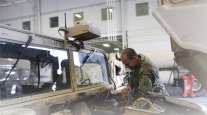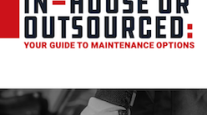Features Editor
Send Out Your Maintenance Labor, or Keep It in the Fleet Shop?
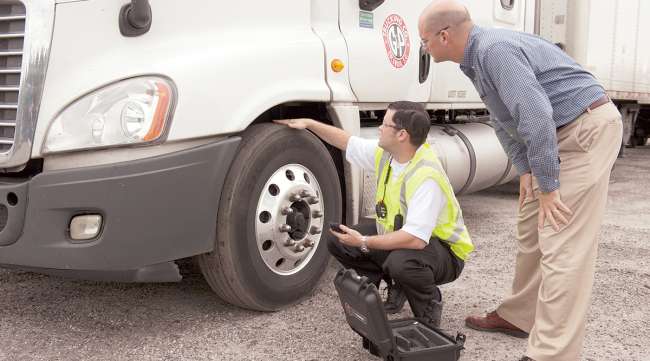
[Find the latest in equipment & maintenance: Explore this quarter's issue of Calibrate]
With inflation pushing the cost of doing business higher and no end in sight, many fleet managers are taking pause when it comes to expenses — especially knowing where to allocate labor costs.
During a discussion at American Trucking Associations’ Technology & Maintenance Council 2022 Annual Meeting & Transportation Technology Exhibition in March, some of those managers highlighted the challenges of choosing between in-house maintenance and outsourcing.
While most fleets have a dedicated service department, these companies still face the growing burden of a technician shortage that forces maintenance managers to get creative with their labor strategies.
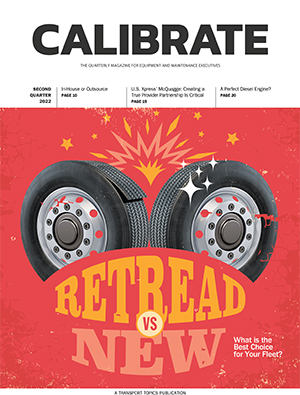
More Q2 Calibrate
►Tire Choices Provide Pros, Cons for Fleet Maintenance Managers
►Send Out Your Maintenance Labor, or Keep It in the Fleet Shop?
►Five Questions: Greg McQuagge, U.S. Xpress
►Freeze: Winning the Hearts and Minds
►TMC Corner: Warming Up to Smart Trailer Tech for Cold Chain Logistics
►Baxter: Will the Diesel Engine Ever Be Perfected?
Explore the Issue!
Although staffing pressures had impacted their need to outsource, most managers often chose their third-party partners primarily based on response and dwell times, quality of work and capabilities versus the factor of price.
“What we don’t want to do is just simply go by cost,” said Brian Antonellis, senior vice president of fleet operations for Fleet Advantage, who acknowledged that early in his career he would choose his outsourcing partner who had performed the preventative maintenance at the lowest price.
He also stressed that a fleet’s criteria for outsourcing repair should strike a balance of cost and good service, and communicate with the partner about specific factors such as dwell times.
“[Ask yourself], how long are the trucks down, because it does you no good to have [preventative maintenance] done for $385 and not $400, if it’s down for 2½ days,” he said. “And if you don’t communicate that to your vendor or your partner, they’re not going to understand that, and it becomes a recipe for disaster.”
Ken Eggen, executive vice president of assets, maintenance and safety with Jones Logistics in Hattiesburg, Miss., said the environment surrounding the need for outsourcing tech help has changed from decades past. Jones Logistics, he explained, outsources 70% to 80% of its technical repair.
“In today’s world, where the customers move quickly and the drivers aren’t always domicile — right where you need them to be to get back to your shop,” he said. “We have to be much more efficient with vehicles.”
Eggen noted that training plays a major factor in a shop’s decision to outsource.
“We’ve had a focus on technician training. The technology — we went through a phase where it changed very rapidly year after year. This got to a point where we couldn’t keep up,” he recalled. “So that’s basically dealer groups, that’s what they have to do for a living that they make. They have a lot better budget for that. They have easier access.”
Eggen explained that the dynamics of outsource maintenance has changed. Now, Jones Logistics contracts work to the OEM dealer technicians who have the required training and are more situated to handle the work.
“If you bring a technician into a shop and you’re going to talk to him about their process, I’d start at the ground level. How long does it take to get them to what they would consider a productive technician?” he said. “And the average time is six years in a dealership, so you can imagine that you could be a longer-term contract work.”
Researching the vendor
Having the prospect of a long-term relationship with a third-party service provider, managers are faced with an array of factors — short- and long-term — that could make or break that partnership.
Tom Wiers, CEO of Wiers Fleet Partners and Wiers International Trucks Inc., drew from his experience in outsourcing maintenance and suggested certain pitfalls to avoid that could doom a third-party venture. A critically important point Wiers noted was not performing due diligence. He recommended that fleet shops spend at least a year researching prospective third-party maintenance providers.
“If they’re not committed for at least a year, then it’s probably not a good idea to start,” said Wiers, whose business is based in Plymouth, Ind. “It’s like hiring a really good, important executive in your company: You wouldn’t make that decision overnight. Hopefully, you would take some time and review and get to know that vendor.”
Wiers also advised to learn more about the vendor’s training and safety policies in addition to visiting their offices.
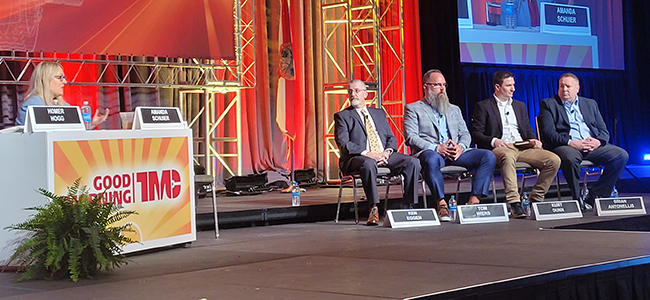
Amanda Schuier of Jetco Delivery moderates an outsourcing panel during the TMC Annual Meeting in Orlando in March featuring Ken Eggen, Jones Logistics; Tom Wiers, Wiers Fleet Partners; Kurt Dunn, Pitt Ohio; and Brian Antonellis, Fleet Advantage. (Michael Freeze/Transport Topics)
“Ask them how they’re going to handle a motor that we repaired when it goes bad. ‘Is it going to be handled quickly?’ ” he said. “Those are all sorts of things you want to get out of the flood zone when talking to references and such. Doing that assessment on the front side is really important.”
Wiers also pointed out the process of integration, especially when some of the outsourcing decisions are made at higher levels then delegated to leaders in both remote service projects and regional fleets.
“That’s where a breakdown of the process could be,” he warned. “Maybe, they weren’t in on the process in the beginning. So, there’s really not a clear understanding of what we’re trying to accomplish.”
Wiers said that it’s important to understand what requirements are involved — looking into details such as where the keys to the truck are, when will it get picked up and dropped back off?
“All small details that are often overlooked really impact the operation, ‘How do you want me to handle an oil seal leak?’ ” he said. “The more you know up front, the better.”
Pitt Ohio, which ranks No. 48 on the Transport Topics Top 100 list of the largest for-hire carriers in North America, views its outsource partners as a complement to its in-house work, according to Kurt Dunn, the fleet’s senior technical adviser.
One of the biggest issues for the Pittsburgh-based carrier, he said is workload.
“Workload leads to download. So, our job is to support our operation — to be sure the operation has the trucks they need,” Dunn said. “If we have excess workload, we can’t control the structure.”
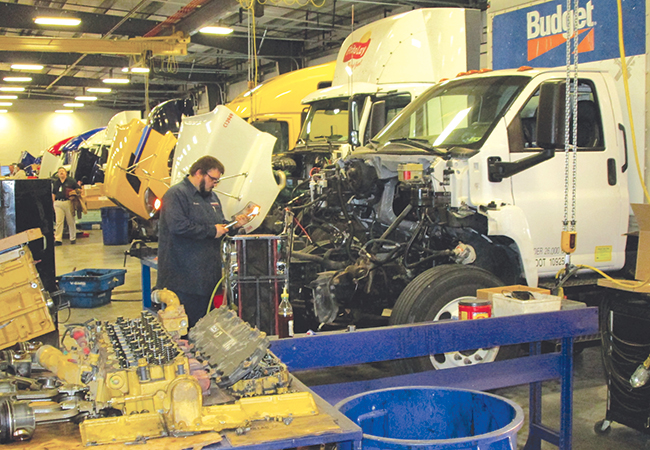
Most managers often choose their third-party partners based on response and dwell times and quality of work. (Volvo Trucks)
Another issue fleets such as Pitt Ohio deal with is warranty, and making sure the relationships with vendors are viable and that the repair coverage is adequate and effective.
Dunn explained that most of the preventative maintenance is done in-house.
“For our overall vehicle health, we really believe that that’s due to a really good preventative maintenance program. And we’ve learned about our preventative maintenance program from our house repairs,” he said. “As we make repairs in-house, we noticed that, for example, a certain OEM or a certain manufacturer may have a sore spot. So, we need to pay more attention to it.
“We can integrate that into our programs, and we have that data coming from our in-house repairs that we can use to make our preventative maintenance better.”
However, Dunn noted, there are criteria for issuing out-of-house repairs.
“We do outsource certain jobs concerning technology. For instance, [automated manual transmissions], when we first brought it on, when it was brand new, we didn’t know much about it and we would outsource that work,” he said. “There is a price to pay to learn on the fly. That’s something you may not have the comfort level with.
Want more news? Listen to today's daily briefing above or go here for more info
“It’s not a cheap part to play around with. So, sending it to the specialist or the dealerships who have that support, where they have the technical support system, brings exposure to that product failure even more.”
As third-party maintenance takes all shapes from OEMs to dealerships, fleets also have developed relationships with truck stop chains that often are a suitable fit.
Wiers said they play a huge role, especially since they get “all the roadside emergency service.”
“If we’re in a contract situation, that is where OEM dealerships comes into play, because that is all on them,” he explained. “However, where we do a ton of work is with the national truck stops, where we schedule teams [for repair]. We schedule tire work with those guys.
“We don’t have a ton of nonscheduled work, but we have work that we schedule into the truck stop chains and they do a really nice job.”



